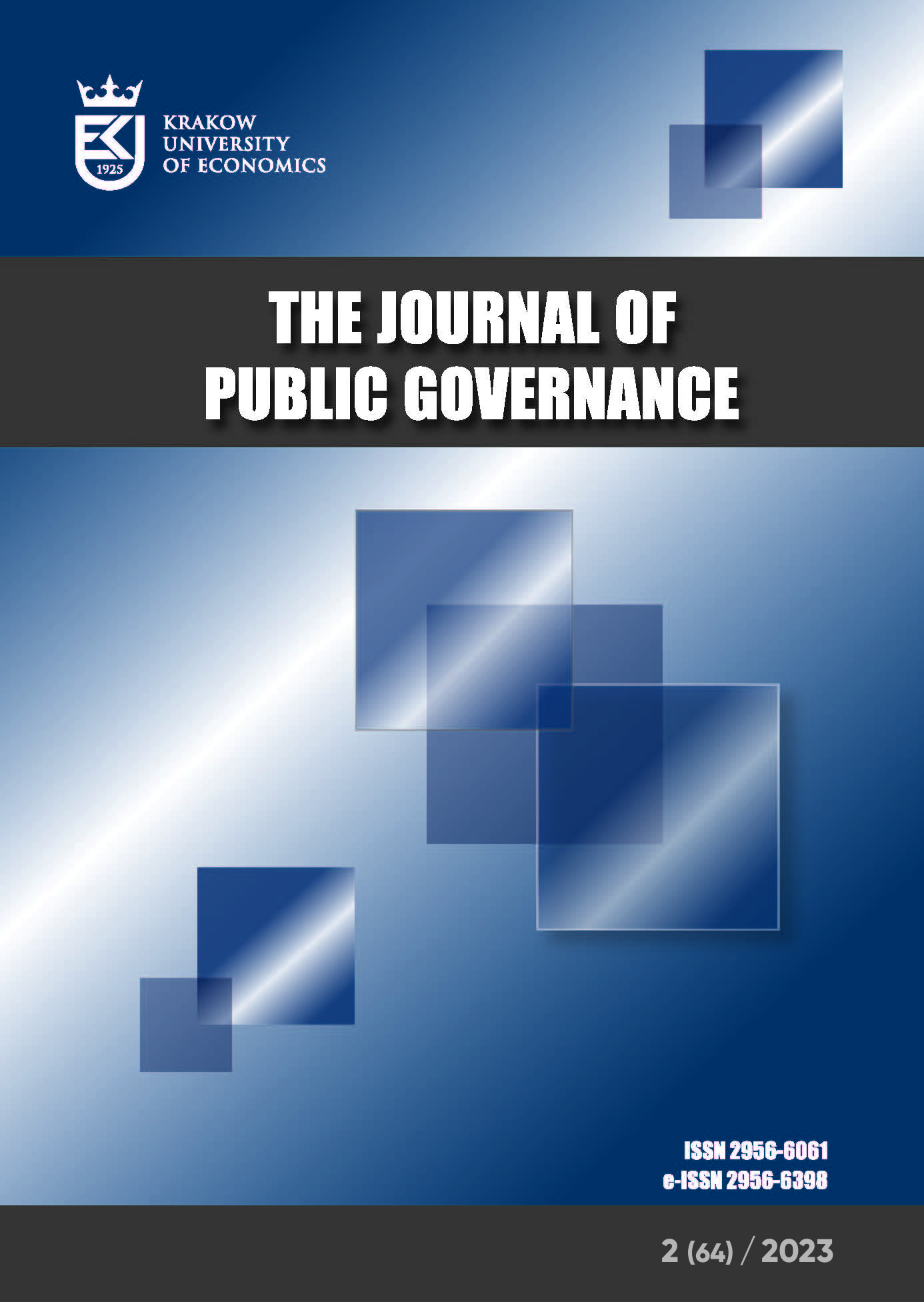The Quality of Life in Polish Cities with Poviat Rights
DOI:
https://doi.org/10.15678/ZP.2020.54.4.03Keywords:
the quality of life, standards of living, cityAbstract
Objectives: The study aims to measure the quality of life in cities with poviat rights and analyse whether differences depend on the number of city residents.
Research Design & Methods: It was hypothesised that the greater the number of inhabitants, the higher the quality of life in a given city. This hypothesis was verified with calculations based on the Statistics Poland data in the form of synthetic and auxiliary indicators.
Findings: The results confirmed the hypothesis. The highest scores characterise the largest Polish cities regarding health, ecology, and economic and social spheres. Simultaneously, it was the smallest cities with poviat rights that had the highest security and education levels.
Implications / Recommendations: All cities with poviat status need to improve ecological awareness, as it is an area with the lowest scores regardless of the size of the city.
Contribution / Value Added: The presented model uses commonly accessible data and is easy to replicate, although it might give less precise results than a custom-made analysis.
Article classification: research article
JEL classification: I31
Downloads
References
Czepkiewicz, M., & Jankowski, P. (2015). Analizy przestrzenne w badaniach nad jakością życia w miastach. Ruch Prawniczy, Ekonomiczny i Socjologiczny, 77(1), 101. https://doi.org/10.14746/rpeis.2015.77.1.6.
Jakość życia w Polsce. Edycja 2017. (2017). Główny Urząd Statystyczny.
Kotarski, H. (2018). Determinanty jakości życia i zadowolenia z życia mieszkańców polskiego miasta. Prace Naukowe Uniwersytetu Ekonomicznego we Wrocławiu, 534, 33–43. https://doi.org/10.15611/pn.2018.534.03
Kudłacz, M. (2017). Ekonomia wartości w kontekście zarządzania rozwojem miast—Przypadek Krakowa. Kultura i Rozwój, 4(5), 39–52.
Kukuła, K. (2012). Propozycja budowy rankingu obiektów z wykorzystaniem cech ilościowych oraz jakościowych. Metody ilościowe w badaniach ekonomicznych, 1(13), 5–16.
Murawska, A. (2016). Bezpieczeństwo publiczne i drogowe jako uwarunkowanie jakości życia mieszkańców miast wojewódzkich w Polsce. Nierówności społeczne a wzrost gospodarczy, 48(4), 265–277. https://doi.org/10.15584/nsawg.2016.4.19.
Papachristou, I. A., & Rosas-Casals, M. (2019). Cities and quality of life. Quantitative modeling of the emergence of the happiness field in urban studies. Cities, 88, 191–208. https://doi.org/10.1016/j.cities.2018.10.012.
Sanetra-Szeliga, J. (2017). Kultura jako element składowy jakości życia w mieście. Kultura i Rozwój, 1 (2)/2017, 45–60. https://doi.org/10.7366/KIR.2017.1.2.03.
Sobol, A. (2019). Quality of Life in Theory and Practice of Sustainable Development. Scientific Papers of Silesian University of Technology. Organization and Management Series, 140, 351–364. https://doi.org/10.29119/1641-3466.2019.140.29.
Szaban, D. (2019). Poziom życia w powiatach województwa lubuskiego. Wiadomości Statystyczne, 64(11), 25–41.
Trzebiatowski, J. (2011). Jakość życia w perspektywie nauk społecznych i medycznych – systematyzacja ujęć definicyjnych. Hygeia Public Health, 46(1), 25–31.
Downloads
Published
How to Cite
Issue
Section
License
Open Access, licence: CC-BY 4.0




